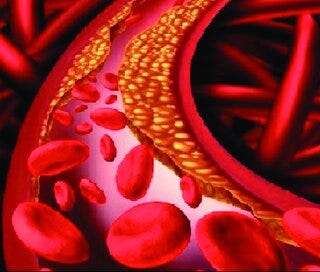Vascular health plays a key role in maintaining efficient blood circulation throughout the body. The vascular system consists of arteries, veins, and capillaries that transport oxygen, nutrients, and waste products to and from tissues. When this system is compromised, it can lead to impaired blood flow and serious medical conditions. Here is more information on the impact of vascular disease on blood flow, its causes, and actionable ways to improve vascular health:
Impacting Blood Flow
Vascular disease disrupts the normal flow of blood through the body. Arteries and veins may become narrowed or blocked as a result of plaque buildup, inflammation, or damage. This reduces the delivery of oxygen and nutrients to vital organs and tissues. Common conditions such as atherosclerosis, peripheral artery disease, and venous insufficiency exemplify these issues.
When blood flow is restricted, symptoms like pain in the extremities, swelling, or skin discoloration may arise. Over time, untreated vascular disease can lead to complications including blood clots, stroke, or organ damage. Early action prevents the progression of vascular issues and supports long-term well-being.
Contributing to Vascular Problems
Certain factors increase the likelihood of developing vascular conditions. These factors include:
- Lifestyle choices: Diets high in saturated fats, lack of physical activity, and smoking all stress the vascular system and promote plaque buildup.
- Medical conditions: Hypertension, diabetes, and high cholesterol place additional strain on arteries and veins. Managing these conditions reduces vascular risks.
- Age and genetics: Natural aging processes and inherited traits affect vascular elasticity and contribute to the development of conditions over time.
Understanding these contributing factors allows individuals to address their own risk profiles effectively. Early interventions, in particular, have a strong impact on slowing or preventing vascular complications.
Steps to Support Healthy Blood Flow
Adopting evidence-based habits protects vascular integrity and promotes proper blood circulation. These habits include the following:
- Maintaining a healthy diet: A diet rich in vegetables, fruits, whole grains, lean proteins, and unsaturated fats supports vascular health. Foods high in omega-3 fatty acids, such as salmon and walnuts, reduce inflammation and improve arterial function. Limiting sodium intake manages blood pressure for smoother blood flow.
- Staying physically active: Regular physical activity, such as walking, cycling, or swimming, keeps the vascular system strong. Exercise encourages efficient blood movement and prevents stiffness in blood vessel walls. Aiming for 30 minutes of moderate activity most days helps sustain circulation and supports heart health.
- Monitoring known medical conditions: Regular checkups aid in maintaining optimal blood pressure, cholesterol, and glucose levels. Medications and treatment plans tailored to individual needs limit risks associated with hypertension and diabetes. Promptly addressing symptoms of vascular disease checks its progression.
Learn About Vascular Disease
Vascular health has a direct impact on blood circulation and overall well-being. Addressing contributing factors like lifestyle choices, medical conditions, and age-related risks keeps the vascular system functioning efficiently. By following a preventative approach and incorporating dietary choices, physical activity, and medical monitoring, individuals can significantly improve blood flow and reduce the risks of vascular disease. Small, consistent changes support the integrity of the vascular system and promote long-term health.









Leave a Reply